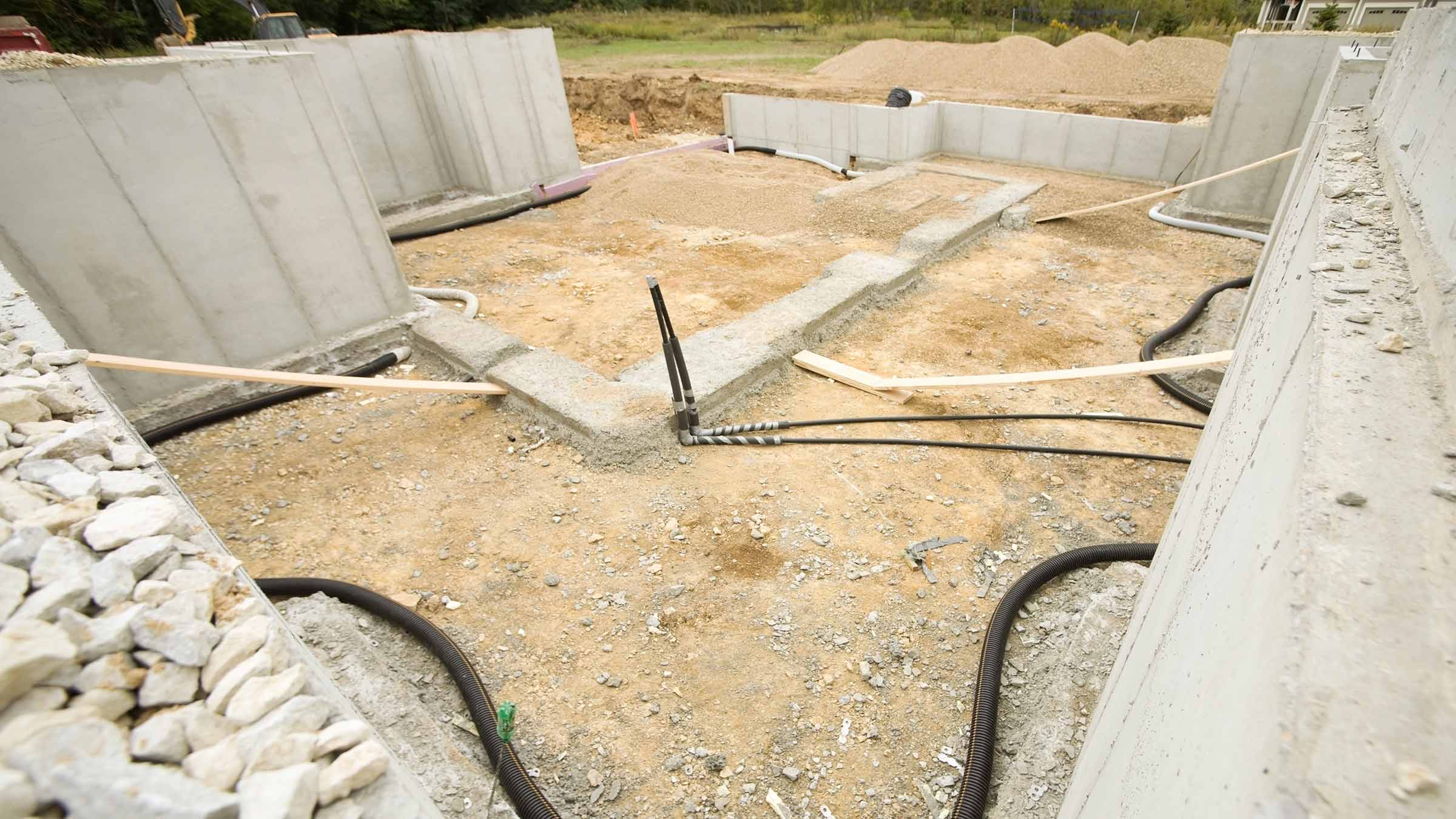
You might already know that the leading cause of cancer death in both men and women in the United States is lung cancer. Most of these people have a smoking history, but not all. About 20% of lung cancers occur in people who have never smoked.
Do you know the leading cause of lung cancer among non-smokers?
It’s radon, according to the U.S. Environmental Protection Agency (EPA).
Radon is an odorless, colorless, naturally occurring gas that emerges up from the ground and doesn’t pose much risk outdoors, but it can build up in houses or in underground water sources in concentrations that are harmful to humans, leading to lung cancer.
The EPA reports that radon is responsible for about 21,000 lung cancer deaths every year, with about 2,900 of these deaths being non-smokers. And Ohio has some of the highest levels of radon in the country.
So, how do you know if you even have radon in your home, and what kind of action should you take if you find it?
Let’s hear from two Ohio State experts in lung cancer and environmental health sciences:
David Carbone, MD, PhD, is a medical oncologist specializing in the latest treatments for people with lung cancer. He’s director of the Thoracic Oncology Center and co-leader of the Translational Therapeutics Program at The Ohio State University Comprehensive Cancer Center – James Cancer Hospital and Solove Research Center (OSUCCC – James), the Barbara J. Bonner Chair in Lung Cancer Research, and a professor of Internal Medicine at The Ohio State University College of Medicine.
Michael Bisesi, PhD, is an environmental and occupational health scientist. He’s vice dean of The Ohio State University College of Public Health and chair and professor in the Division of Environmental Health Sciences at the college.
- Question How does radon affect our health?
-
Answer
Dr. Carbone: As a gas that is inhaled into the lung, radon produces heavy particles called alpha particles that penetrate into the lungs and cause breaks in lung cell DNA, resulting in the gene damage that causes lung cancer.
Dr. Bisesi: If those mutated cells are not destroyed naturally, they may progress to malignant neoplasms. The lungs are the most vulnerable target organs due to inhalation of radioactive radon gas and the associated release of the radioactive ionizing radiation via alpha particles.
- Question Is radon a concern no matter where you live? Are there geographic areas that tend to have higher radon in homes?
-
Answer
Dr. Bisesi: The parent element of radon is uranium, and it is present in almost all rocks at some levels, ranging from negligible amounts to very high. It is therefore ubiquitous worldwide in underground geologic deposits.
Radon gas is a concern in most U.S. states, including Ohio, where it is more commonly detected than not.
See a PDF map of U.S. radon zones from the EPA.
Since radon is a gas, it more easily diffuses or moves through soil. Both underground levels of buildings, such as residential basements among others, and underground geologic aquifers or underground caves that hold groundwater can become contaminated with radon gas. The radon gas moves through soil and easily enters through cracks and holes in foundations and becomes detectable in basement air.
The radon that moves into groundwater held in natural aquifer formations can be released into groundwater used as wellwater for home use. Water contaminated with radon can release the gas when faucets are opened or toilets flushed, and especially from showers.
- Question Should I test for radon in my home? How do I do that?
-
Answer
Dr. Bisesi: The maximum concentration permitted by the U.S. EPA is 4 pCi per liter of indoor air. However, lower levels may be harmful, too, especially if people living there are exposed over a long period of time or, more so, smoke tobacco products, leading to increased risk of lung cancer.
The best way to know if radon is present at detectable and measurable levels is to have the air in your home sampled and analyzed for radon gas. There are licensed radon contractors, and as an alternative, there are home test kits available that a homeowner can use to conduct sampling and then submit for analysis. In Ohio, those concerned about radon in a building can refer to the Ohio Department of Health’s radon information online, and find home test kits at ohio.radon.com.
Homeowners using well water (groundwater derived from underground aquifers) should consider getting their water analyzed, too. Again, guidance can be provided by the applicable local and/or state health departments. (Call the Safe Drinking Water Hotline at 1-800-426-4791 and request information for your specific state for certified radon water testing laboratories.)
Even though groundwater may be a source of radon, indoor airborne radon is more common due to infusion of radon gas through the foundation. If you’re outsourcing testing, then only use a contractor licensed by your state.
- Question Can you know for sure if someone’s lung cancer was caused by radon?
-
Answer
Dr. Carbone: We can’t know with certainty. There are many ways to damage DNA, and each damages DNA in slightly different ways. Looking at the type of damage can give clues as to the cause. Radon tends to cause what is called double-strand breaks, but other exposures cause those breaks as well.
- Question How does radon form?
-
Answer
Dr. Bisesi: Uranium is radioactive, meaning it is atomically unstable and therefore releases energy in the form of ionizing radiation as it undergoes “radioactive decay” to progress from a state of lower to higher stability over time.
As uranium undergoes radioactive decay, there are a series of intermediate radioactive elements that form, eventually leading to the solid radioactive element radium, which immediately precedes the formation of radioactive radon gas which is then able to move up through the soil.
- Question What do I do if radon is detected in my home?
-
Answer
Dr. Bisesi: The good news is that there are very acceptable and effective methods to reduce levels of radon gas in air and water. A common solution, among a few options, is installing a system that exhausts radon gas from underneath a basement or slab foundation and moves that radon gas away, releasing it into the outdoor air where it is diluted and blown away in the wind. That way, the radon gas does not infuse into the home and radon gas levels are controlled.
Groundwater can be treated, too, using an activated charcoal system to adsorb and remove radon from the groundwater before it is conducted into the home plumbing system.
It’s important to use licensed contractors specializing in radon mitigation for these solutions.
- Question If I’ve been exposed to radon, is there a way to reverse its effects or “detox” from radon?
-
Answer
Dr. Carbone: No. While some dietary interventions may facilitate DNA repair, there really is no way to prevent the alpha particle damage — it is simply related to the amount of radon that is inhaled into the lung. Unfortunately, right now, lung cancer screening is not approved by Medicare or insurance companies for people exposed to even high levels of radon.
- Question What should I avoid when it comes to radon mitigation?
-
Answer
Dr. Bisesi: Although most companies are honest and reputable, if you’re concerned about conflict of interest, it may be best to have air or water tested by a licensed contractor who is not affiliated with a radon mitigation company.
Also, if you decide to use a store-bought test kit, ensure that it is approved as an accurate test kit. It may be best to contact the local and/or state health departments first for assistance.
2024 Editor's Note: Michael Bisesi, PhD, CIH, retired from The Ohio State University in May 2024.

Now more than ever, environmental health researchers and practitioners are needed to address environmental issues and threats.
The Ohio State University College of Public Health offers Environmental Health degree programs and a Global One Health Certificate.
Learn More




